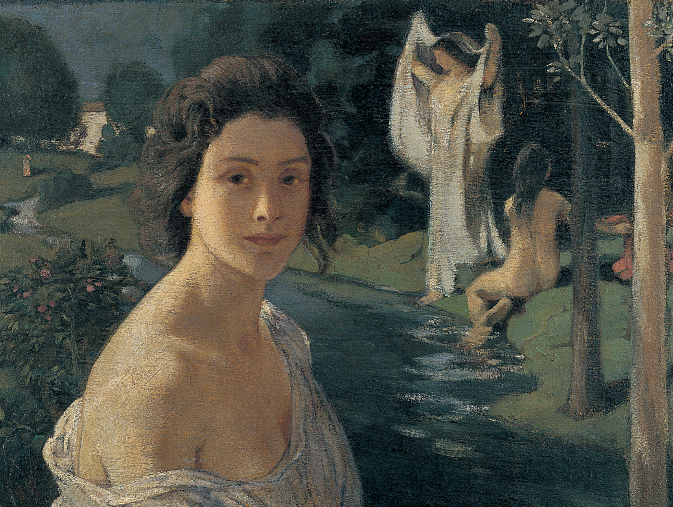Frédéric Chopin, Nocturne in F-sharp, Op. 15, no. 2 (1831)
Chopin’s twenty-one nocturnes, meaning “night pieces,” written throughout his career, are as different as twenty-one different nights. But each features a particularly striking tune — a languid serenade, for example, or a dark, secret lament. Something else — a musical contrast — is usually heard or overheard in the night, too, such as a distant procession, a passionate encounter, or even a fragment of a dance or a folk song.
The opening tune in Chopin’s Nocturne in F-sharp has an elegance unique to the composer, an elegance that stems partly from the wonderfully graceful rhythm, partly from the Romantic turns of harmony, and partly from the pianistic decorations of the melodic line. We have seen decorated melodies before, but Chopin’s have an almost liquid quality, caused partly by chromaticism — by the free use of all the notes of the chromatic scale, as in this fragment:

Romantic form contributes to the Romantic effect. Chopin avoids sharp demarcations and literal returns; the music seems to grow spontaneously, in an almost improvisational way. The main tune, A (a a′ b), does not really end, but gives way to plaintive sounds emerging out of nowhere, which surge up to a moment of real passion. Then the return of the tune (a″) is fragmentary — though in a way more intense — and the whole is capped by an unexpected and delicious little coda. Free rhythm in the performance (rubato) mirrors the freedom of form.

Was this striking painting, by a minor late nineteenth-century artist, done with Chopin’s nocturnes in mind? Called Notturno, its cool elegance, twilight sensuality, and vaguely apprehensive quality might suggest so. Blauel/Gnamm/Artothek.
LISTEN
| 0:00 |
a |
| 0:27 |
a′ ornamented |
| 0:58 |
b |
| 1:28 |
c |
| 2:13 |
a" |
| 2:55 |
coda |

